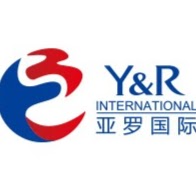Laundry detergent pods remain a health hazard
Laundry detergent pods are convenient, but there’s a dark side to these cleaners from Arm & Hammer, Purex, Tide, and other brands: Since early 2012, poison-control centers nationwide have received reports of nearly 7,700 pod-related exposures to children age 5 years and younger.
As part of the upcoming National Poison Prevention Week (March 17-23), Consumers Union, the policy and advocacy arm of Consumer Reports, is warning the public of this health hazard and pressing industry to do more to protect children.
Laundry detergent pods have been around since the short-lived Salvo tablets of the 1960s and '70s. In 2006, Cot’n Wash reintroduced them to the U.S. market with the launch of Dropps. It wasn’t until Procter & Gamble unveiled Tide Pods in February 2012, however, that these cleaners started to gain widespread appeal. (First-year sales of Tide Pods, which have at least 75 percent of the pod market, were projected to reach $500 million.)
We first warned of the dangers of detergent pods in May 2012, when there had been about 700 reports to poison-control centers regarding young children. Nearly 6,300 exposures occurred in 2012 compared with more than 7,800 exposures for all conventional detergents in 2011 (last year's totals are not yet available for those cleaners).
Pod detergents have just 6 percent market share, according to SymphonyIRI Group. Why then the disproportionate number of pod exposures? As the Centers for Disease Control and Prevention has noted, "Children might be attracted to pods because their colorful appearance and size are similar to candy." (A Tide Pod is shown below.)
A further concern was the types of symptoms pod exposures were causing. Swallowing conventional detergent might result in mild stomach upset, but with highly concentrated detergent pods the ingestion can cause excessive vomiting, lethargy, and gasping. In some reported cases, victims stopped breathing and required ventilation support.
Late last year, we urged consumers with young children to keep detergent pods locked up and out of reach. We also called on the Consumer Product Safety Commission to investigate pods and consider stricter regulations. And we asked manufacturers to improve the safety of these products. Procter & Gamble had already said it was replacing the single-latch cover used on some its containers with a double-latch version, designed to make the packages tougher to open.
But as sales increased, so did the exposures. In October 2012, the CDC called the situation “an emerging health hazard,” with young children being most vulnerable. A month later, the CPSC followed with a safety alert.
That month, we submitted a Freedom of Information Act request to the CPSC to learn more about the dangers of detergent pods and to find out which products were causing the most exposures.
We received a response to our FOIA in mid-January. While the eight reports shed some light on the situation, they were a tiny fraction of the thousands of incidents that poison-control centers had collected. What’s more, the FOIA response contained more than 200 blank pages. The CPSC could not provide any specific reason for the redaction, but spokesman Scott Wolfson wrote in an e-mail, “We can confirm that certain unconfirmed complaints were not provided to Consumers Union, as well as documents contained within our Compliance file, due to the matter currently being open and active.”
At that point, we had conversations with various manufacturers, starting with Procter & Gamble. The manufacturer shared the findings of a study it funded, which engaged 12 poison-control centers from around the country. Among the findings: While most pod ingestions resulted in minor symptoms, there were also more serious outcomes, including lethargy, respiratory depression, and esophageal injury.
The Procter & Gamble study also found that in nearly 9 out of 10 cases, the detergent pods were self-accessed by children. The company told us it is partnering with the American Academy of Pediatrics on outreach efforts to educate consumers about the dangers of pod detergents. The company also plans to use a new container with a triple latch that almost meets the child-resistant standard. And it is introducing an opaque container that will obscure the bright, colorful Tide Pods. However, Procter & Gamble is not considering changing its tricolored, liquid-based formulation, which give its pods a particularly candy-like appearance.
Jonathan Propper, CEO of Cot’n Wash, manufacturer of Dropps pods, said, “Though we have not had a reported incident of ingestion with Dropps, we are proactively incorporating precautionary warnings on all of our pouch and opaque tub packaging moving forward.”
Those are steps in the right direction efforts, but more must be done to keep kids safe. We continue to call on all manufacturers to develop adequate child-safe packaging and prominent warning labels. Companies should explore other safety measures, including changing the color of the pods to make them less appealing or coating them with a foul-tasting material. And retailers should improve in-store signage to better alert parents and caregivers to the dangers of laundry pods.
We would also like to see a less-restrictive flow of information from poison-control centers to safety-advocacy groups and the CPSC. For instance, the American Association of Poison Control Centers quoted us a price of $32,400 when we requested data on pod exposures. What's more, manufacturers would have had to give their consent for information on their brands to be included in the data we asked for. At the very least, the CPSC should automatically be given full, free access to this type of information.



评论
发表评论